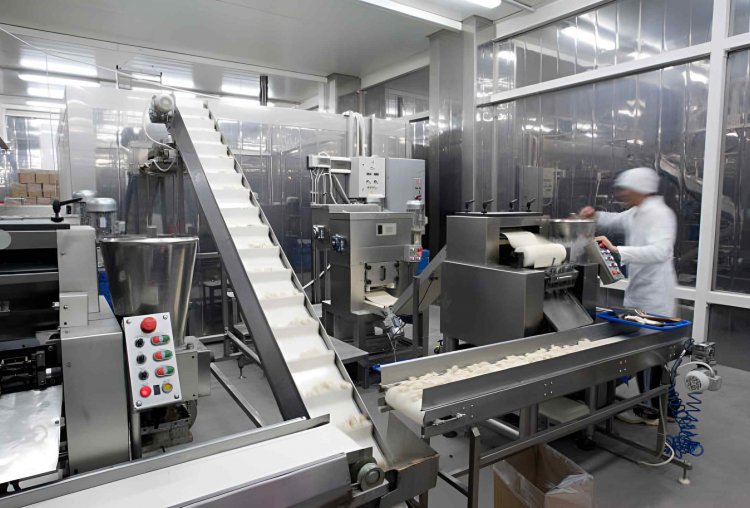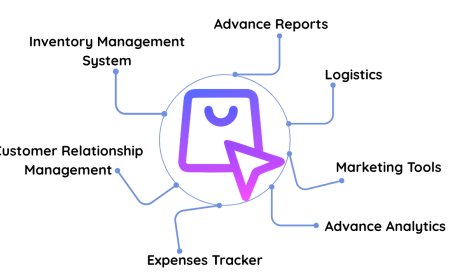The Rise of Nepal's Manufacturing Companies: A Comprehensive Analysis
Discover the growth and success of Nepal's manufacturing companies with our comprehensive analysis. Stay updated on the latest trends and insights in the industry. Read now!

Nepal has come a long way in the past few decades in terms of economic development. The country has transformed from a predominantly agrarian economy to a manufacturing hub with a thriving industrial sector. The manufacturing industry has grown rapidly in recent years and has become one of the most crucial components of the Nepalese economy. In this article, we will take a comprehensive look at the current state of the manufacturing industry in Nepal, key players, factors contributing to its growth, opportunities, challenges, and future outlook.
Overview of the Current State of the Manufacturing Industry in Nepal
The manufacturing industry in Nepal has grown steadily over the last decade, with a compound annual growth rate of 13.17% projected from 2020.The sector has experienced a surge in investment, with both domestic and foreign investors pouring money into the country's manufacturing sector. As a result, the number of manufacturing companies has increased significantly in recent years, leading to an increase in employment and overall economic growth.
Key players and Market Leaders in the Nepalese Manufacturing sector
The Nepalese manufacturing sector is dominated by a few key players and market leaders, including both large multinational companies and small to medium-sized enterprises (SMEs). These companies have established themselves as leaders in the industry and play a significant role in driving growth in the manufacturing sector.
Some of the key players and market leaders in the Nepalese manufacturing sector include:
- Dabur Nepal
- Unilever Nepal
- Nepal Lever Limited
- Berger Paints Nepal
These companies have a strong market presence, have invested in their operations, and have established themselves as leaders in their respective industries. They have also played a significant role in driving the growth of the manufacturing sector in Nepal by providing employment opportunities and contributing to the overall economic growth of the country.
Factors Contributing to the Growth of the Manufacturing Industry in Nepal
The manufacturing industry in Nepal has been growing in recent years, driven by a number of key factors. These factors include:
-
Government support and incentives
The Nepalese government has introduced policies and programs aimed at boosting the manufacturing sector, including tax incentives and subsidies for SMEs and large multinational companies operating in the country. -
Access to raw materials
Nepal has abundant natural resources, including minerals and forests, that can be used as raw materials for the manufacturing industry. This has helped to drive growth in the sector. -
Growing consumer market
Nepal has a large and growing consumer market, with an increasing middle class and a growing demand for consumer goods. This has created opportunities for manufacturing companies to increase production and sales. -
Improved infrastructure
The Nepalese government has been investing in improving the country's infrastructure, including roads, bridges, and energy infrastructure, which has made it easier for manufacturers to transport goods and access raw materials. -
Favorable foreign investment climate
The Nepalese government has introduced policies and initiatives aimed at attracting foreign investment in the country, including tax incentives and subsidies for multinational companies operating in the country. This has helped attract investment in the manufacturing sector and drive growth in the industry. -
Technological advancements
The manufacturing industry in Nepal has been benefiting from advancements in technology, including automation, robotics, and artificial intelligence, which have increased efficiency and reduced costs.
These factors have contributed to the growth of the manufacturing sector in Nepal and have helped to create a favorable environment for companies operating in the industry.
Opportunities and Challenges Facing Manufacturing Companies in Nepal
The manufacturing industry in Nepal presents both opportunities and challenges for companies operating in the sector.
Opportunities:
-
Growing consumer market
The Nepalese consumer market is growing, creating opportunities for manufacturing companies to increase production and sales. -
Government support
The Nepalese government has introduced policies and programs aimed at boosting the manufacturing sector, including tax incentives and subsidies for companies operating in the country. -
Abundant natural resources
Nepal has abundant natural resources, including minerals and forests, that can be used as raw materials for the manufacturing industry. -
Improved infrastructure
The Nepalese government has been investing in improving the country's infrastructure, making it easier for manufacturers to transport goods and access raw materials. -
Favorable foreign investment climate
The Nepalese government has introduced policies and initiatives aimed at attracting foreign investment in the country, which has created opportunities for multinational companies to invest in the manufacturing sector.
Challenges:
-
Lack of skilled labor
The Nepalese manufacturing sector faces a shortage of skilled labor, making it difficult for companies to find and retain qualified workers. -
Poor infrastructure
Despite recent improvements, the Nepalese infrastructure remains inadequate, making it difficult for manufacturers to transport goods and access raw materials. -
Corruption and bureaucracy
Corruption and bureaucratic obstacles remain a challenge for companies operating in the Nepalese manufacturing sector. -
Limited access to financing
Small and medium-sized enterprises in particular face difficulties in accessing financing for investment in their operations, which can limit growth in the manufacturing sector. -
Competition from imports
The Nepalese market is flooded with imported goods, which can make it difficult for local manufacturers to compete and maintain market share.
Despite these challenges, the manufacturing industry in Nepal presents significant opportunities for companies operating in the sector. Companies that are able to overcome these challenges and take advantage of the opportunities available will be well-positioned for success in the future.
The future outlook for the Nepalese manufacturing market
The future outlook for the Nepalese manufacturing market is generally positive, driven by a number of key factors:
-
Growing consumer market
The Nepalese consumer market is expected to continue growing, creating opportunities for manufacturers to increase production and sales. -
Government support
The Nepalese government is expected to continue its support for the manufacturing sector, including the introduction of policies and programs aimed at boosting the industry. -
Technological advancements
Technological advancements are expected to continue in the manufacturing sector, increasing efficiency and reducing costs for companies operating in the industry. -
Foreign investment
The Nepalese government is expected to continue its efforts to attract foreign investment in the country, which will help to drive growth in the manufacturing sector. -
Expansion of infrastructure
The Nepalese government is expected to continue its investments in improving the country's infrastructure, making it easier for manufacturers to transport goods and access raw materials.
In conclusion, the manufacturing industry in Nepal has come a long way in recent years and is poised for continued growth in the future. With a favorable business environment, low labor costs, and a growing consumer market, Nepal is an attractive destination for investment in the manufacturing sector. However, there are still several challenges that companies face, including a lack of access to finance, limited infrastructure, and a shortage of skilled labor. The Nepalese government is working to address these challenges and promote the growth of the manufacturing sector, and the future outlook for the Nepalese manufacturing market is positive.
What's Your Reaction?


































































































